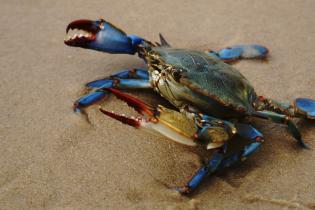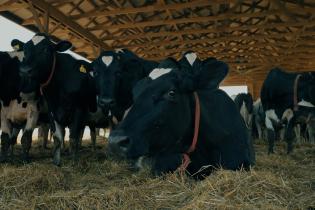NFWF Celebrates Oyster Recovery Milestone in Virginia
NORFOLK (September 25, 2017) –The National Fish and Wildlife Foundation (NFWF) and the U.S. Environmental Protection Agency (EPA) recently announced more than $12.6 million in grants to support the restoration and conservation of the Chesapeake Bay watershed in six states and the District of Columbia. The grants will generate more than $21.2 million in matching contributions for a total conservation impact of $33.8 million.
The 14 projects in Virginia will leverage matching funds of $5,566,480 for a total of $9,356,586 million. The grants were awarded through the Chesapeake Bay Stewardship Fund (CBSF), a partnership between NFWF and the EPA’s Innovative Nutrient and Sediment Reduction Grants Program (INSR Program) and Small Watershed Grants Program (SWG Program). Additional support is provided by the U.S. Department of Agriculture’s Natural Resources Conservation Service, the U.S. Forest Service, the U.S. Fish and Wildlife Service, the Altria Group Restoring America’s Resources partnership and CSX.
Virginia grant recipients are being recognized today at the project site of a previous grant recipient— recently completed oyster reef and areas of living shoreline at the Hermitage Museum, situated on the Lafayette River in Norfolk, Virginia. Additionally, the important work of the National Oceanic and Atmospheric Administration (NOAA) in Tidewater will be acknowledged today by Representative Robert Scott and Governor Terry McAuliffe.
The event celebrates two new grants to the Elizabeth River Project and the Chesapeake Bay Foundation, which together will support a milestone in Virginia oyster restoration efforts – the completion of the first fully restored tributary in Virginia, the Lafayette River, as defined by the 2014 Bay program watershed agreement. There are now 75 acres of coastal reef on the Lafayette including natural and added reef structures; these new grants will enable ERP and CBF to bring the total to 80 acres of oyster reef in the Lafayette branch of the Elizabeth River.
The oyster restoration that will be achieved with the ERP and CBF projects also indicates the ability to be successful in large scale restoration in Virginia. Broader habitat benefits will manifest in the return of species like striped bass and crabs that will use these reefs as habitat structures.
“Through the Chesapeake Bay Stewardship Fund, the National Fish and Wildlife Foundation and our partners, especially the U.S. Environmental Protection Agency, continue to invest in locally-led efforts to protect and restore the more than 100,000 miles of local rivers and streams that feed the Bay,” said Jeff Trandahl, executive director and CEO, NFWF. “These investments demonstrate that the actions necessary to restore local rivers and streams go hand in hand with opportunities to enhance local communities like those here in Norfolk.”
The projects supported by the 44 grants recently announced will establish methods to improve waterways, restore habitat and strengthen iconic species in Delaware, Maryland, New York, Pennsylvania, Virginia, West Virginia, and the District of Columbia. The funds will engage farmers and agricultural producers, homeowners, churches and businesses in on-the-ground restoration that supports quality of life in their communities, improving local waterways and ultimately the health of the Bay.
“EPA is committed to supporting local communities using innovative, sustainable, community-based approaches for improving the health of their local rivers and streams throughout the Chesapeake Bay watershed,” said Cecil Rodrigues, EPA acting regional administrator. “These 44 projects are a smart investment in solid partnerships with states and local organizations that will return lasting benefits by improving stormwater infrastructure, and ensuring healthy waterways and safe drinking water.”
The INSR Program awarded more than $7.3 million to 13 projects, with recipients providing more than $13.7 million in match. The program provides grants to innovative and cost-effective projects that dramatically reduce or eliminate the flow of nitrogen, phosphorus and sediment pollution into local waterways and the Chesapeake Bay.
The SWG Program awarded more than $5.3 million to 31 projects, with recipients providing nearly $7.5 million in match. The program provides grants to organizations and municipal governments that are working to improve the condition of their local watershed through on-the-ground restoration, habitat conservation and community involvement. Grant recipients expect to reduce pollution through infrastructures including greener landscapes and community outreach initiatives that promote native landscaping and improved practices for managing runoff.
“Today we are celebrating a first in Virginia oyster recovery work, as Tidewater draws closer to meeting the goals for water quality and native oyster recovery set forth by the Chesapeake Bay blueprint,” said Governor McAuliffe. “I want to thank the National Fish and Wildlife Foundation for supporting these projects and 12 others around the Commonwealth that will contribute to the health of our environment, our wildlife and our economy.”
“The Chesapeake Bay serves as an economic lifeline for the region, supporting jobs across a diverse set of industries and helping revitalize local communities,” said Sen. Mark Warner (D-VA). Over the years, we’ve made significant progress in improving watershed conditions through steady conservation and restoration efforts. These federal funds will help augment the work that NFWF and local partners have been doing on the ground to protect the Bay so future generations can continue to enjoy.”
“The Chesapeake Bay Stewardship Fund supports conservation projects in a smart way throughout the Chesapeake Bay region. By investing in these partnerships between the federal government and private organizations through NFWF, we can better achieve our regional Chesapeake Bay cleanup goals in ways that benefit waterways, farms, and outdoor recreation, all while supporting local jobs,” said Senator Tim Kaine (D-VA).
"The rebound of the Lafayette oyster and the restoration of the Lafayette River are a shining example of what we can accomplish when federal, state, and local governments partner with industry and advocacy organizations to better our communities,” said Rep. Bobby Scott (D-VA). “Today’s announcement highlights the importance of continued federal investment in these efforts and continued partnerships with other stakeholders."
“NOAA has worked with a number of partners to support the restoration of oysters in the Lafayette River through mapping the river bottom, providing funding for reef restoration, and monitoring surviving reefs,” said Sean Corson, acting director of the NOAA Chesapeake Bay Office. "Our efforts are in support of the Chesapeake Bay Watershed Agreement’s goal of restoring oysters in 10 tributaries by 2025. The Lafayette River will be the first in Virginia to be completely restored based on its oyster metrics.”
“I can’t think of anything more wonderful than to be able to say this corner of the bay, once written off as dead, will be fully restored for the native oyster,” said Marjorie Mayfield Jackson, Executive Director, Elizabeth River Project.
Since 2006, the INSR Program has provided more than $65 million to 153 projects that reduce the amount of nitrogen, phosphorus and sediment in the Chesapeake Bay watershed. Since 1999, the SWG Program has provided more than $52 million to support 804 projects in the region and has further leveraged $143 million in local matching funds for a total conservation investment in on-the-ground restoration of nearly $200 million.
For more information about the Chesapeake Bay Stewardship Fund or to download the 2017 Chesapeake Bay Stewardship Fund Grant Slate, visit www.nfwf.org/chesapeake.
About the National Fish and Wildlife Foundation
Chartered by Congress in 1984, the National Fish and Wildlife Foundation (NFWF) protects and restores the nation's fish, wildlife, plants and habitats. Working with federal, corporate and individual partners, NFWF has funded more than 4,500 organizations and committed more than $3.8 billion to conservation projects. Learn more at www.nfwf.org.
###


